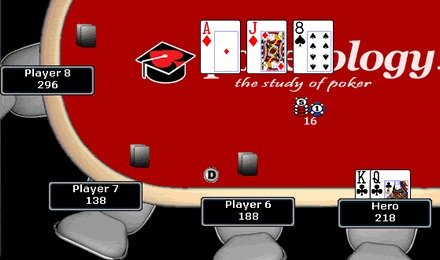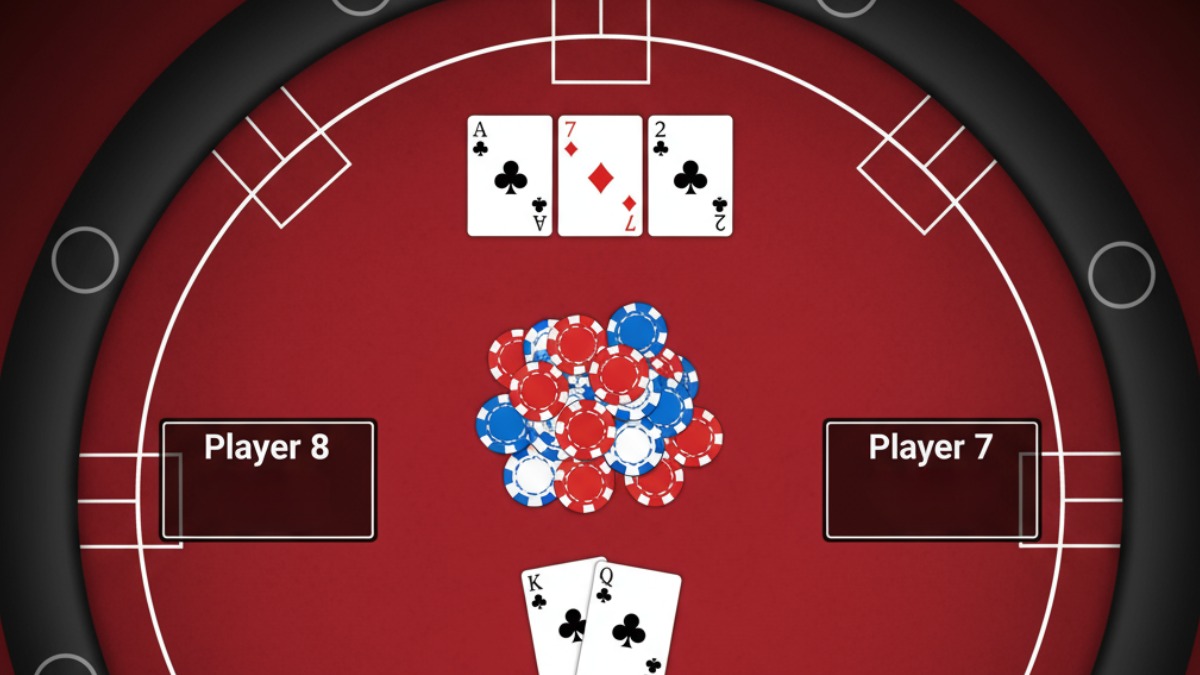
The Continuation Bet
A continuation bet (c-bet) is a wager made on the flop by a player who took the lead with a raise before the flop. In essence, it’s a continuation of that initial aggression—an effort to maintain control of the hand and keep pressure on opponents.
C-bets are among the most common plays in modern poker, especially when the pre-flop raiser is in position against a single opponent who has checked. The strategy is based on the simple idea that most hands miss the flop, so the first player to bet often wins the pot outright.
In this guide, we’ll explain when, why, and against whom a continuation bet works best, explore key bet-sizing and board texture considerations, and detail effective counter-strategies to defend against them. We’ll also cover advanced adjustments, including multi-way dynamics and how to balance your c-bet frequency for long-term profitability.
The Purpose of Continuation Bets
The strategy aims primarily to win the pot immediately by applying aggression, often forcing opponents to fold before the flop. As a secondary benefit, this same approach can serve as a reverse bluff—building the pot when holding a strong hand. Next, we’ll explore how the number of opponents influences this approach.
The Number of Opponents
The fewer opponents you face, the higher your chances of winning the pot with a continuation bet. As a simple guide:
- Heads-up: C-bet more often when in position and on dry boards that favor your range.
- Two–three players: Tighten your c-bet range to strong value hands and high-equity bluffs; avoid automatic continuation bets.
- Four or more players: Default to checking unless you have strong value or nut draws.
The logic is straightforward — the more players in the hand, the greater the chance someone has connected with the board, reducing your fold equity.
The Texture of the Board
As the Mad Genius of Poker, Mike Caro, once said, “Hold’em is a game of high cards, while stud is a game of live cards.” Keeping that wisdom in mind, if the flop comes Jack, Queen, and King, there’s a strong chance one of your opponents has connected with these high-ranking cards.
The “board texture” refers to how well the flop connects with different ranges of hands. Some flops are dry—uncoordinated and offering few draws—while others are wet, meaning they’re highly connected and likely to hit multiple ranges. Board texture matters because the more a flop connects with your opponents’ possible hands, the less likely your continuation bet (c-bet) will succeed.
The texture of the flop is critical when deciding whether a c-bet is the play with the best expected value. Aside from high cards, pay close attention to coordinated boards that favor straight and flush draws.
Let’s look at a few examples. Suppose you raise with 
 and get called by the button and both blinds. The flop comes
and get called by the button and both blinds. The flop comes 

 :
:
Figure 1

This is not a good spot to c-bet. You’re against three opponents, and your hand value is only an inside straight. You missed your high cards and flush potential, and one of your opponents could have easily connected with such a flop. If checked to, then check and hope you get a free look at the turn. If you bet and then get raised by the button or check-raised by one of the blinds, you would have to fold, so see if you can hit your draw on the turn.
Let’s suppose you’re holding the same hand, yet this time you’re against a single opponent and the flop is dealt ![]()
![]()
![]() :
:
Figure 2

This is a prime spot for a semi-bluff c-bet. Your opponent checks, and you can bet with confidence. The board is dry, meaning it offers few draws, and as the pre-flop raiser, you have a clear range advantage—most of your range includes strong aces and big cards. Even if you’re called, you still have strong equity with two overcards and a flush draw.
Continuation betting also shines when you connect big, such as flopping a set. A core principle in poker strategy is maintaining consistent betting patterns. If you’re regularly c-betting dry boards after missing, you must also follow through when you hit a monster. This balance prevents observant opponents from spotting your strength and keeps your range deceptive. By blending bluffs and value bets through disciplined aggression, you turn consistency into a weapon that conceals the true power of your hand.
Bet Sizing
When playing no-limit hold ’em, the size of your continuation bet should depend on both board texture and range strength.
On dry boards that favor the pre-flop raiser, smaller bets—around one-quarter to one-third of the pot—are often sufficient to apply pressure while risking less. On more wet or coordinated flops that connect strongly with your opponent’s range, larger bets are generally better to deny equity and protect your hand.
Effective c-betting is about tailoring your bet size to the situation rather than following a fixed formula. The next section explores when a continuation bet isn’t the right play—and how recognizing those spots can save you chips and improve your long-term strategy.
When Not to C-Bet
Knowing when not to continuation bet is just as important as knowing when to use it. Some board and game conditions make checking the better play.
You should often check instead of c-betting in multiway pots, where the odds increase that at least one opponent has connected with the board. Likewise, avoid firing on draw-heavy or coordinated flops that give opponents easy ways to continue. Finally, when you’re out of position, it’s usually tougher to control the hand after betting, making a check more strategic.
Recognizing these situations ties directly into reading your opponents—understanding when they’re likely to continue or fold is the next step in mastering c-bet strategy.
Your Opponents
Understanding your opponents’ tendencies is crucial before firing a continuation bet, especially when you’ve missed the flop. Knowing whether they play tight or loose helps you gauge how likely they are to fold, call, or fight back. Be alert for players who use the floating tactic—calling your c-bet with a weak hand to bluff later if you check the turn. Recognizing this move lets you plan and maintain control of the hand instead of giving up the initiative.
Next, we’ll look at countering the continuation bet—how to defend effectively when you’re the one facing the pressure.
Countering the Continuation Bet
Now let’s look at the situation from the other side of the table. When facing a continuation bet, your goal is to read your opponent’s tendencies and decide whether their aggression is real or routine. Some players automatically fire c-bets after every flop, while others do so selectively. Identifying which type you’re up against is key to responding effectively.
Reverse Engineering
To counter a frequent continuation bettor, think in terms of reverse engineering—break down your opponent’s actions to understand their logic and exploit it.
Use this quick checklist to guide your response:
- Does your opponent continuation bet regularly and predictably?
- Does the size of the bet justify a call with your current hand?
- Based on past behavior, is this likely a steal attempt?
- If it is, should you raise, call, or fold to turn the pressure back on them?
Conclusion
The continuation bet remains one of poker’s most reliable tactics—highly effective when applied under the right conditions. But it should never serve as your only weapon at the table. Like any strategic move, overuse can transform an advantage into a costly weakness. Continuously firing c-bets as the pre-flop aggressor makes your game predictable and exposes you to skilled opponents ready to counter. The smarter play is to stay alert, recognize patterns, and target players who overlook the importance of a balanced, flexible strategy in poker.